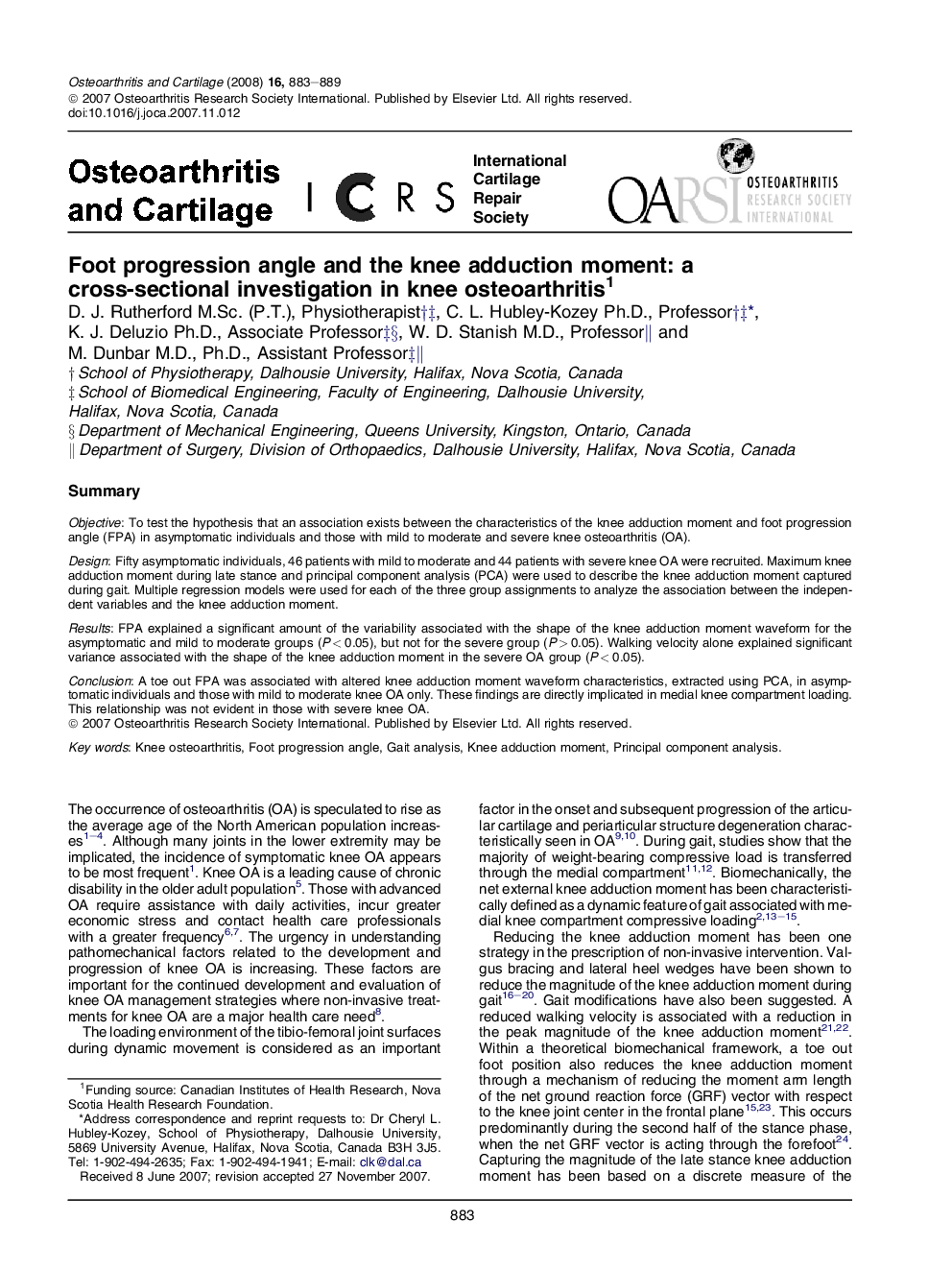| کد مقاله | کد نشریه | سال انتشار | مقاله انگلیسی | نسخه تمام متن |
|---|---|---|---|---|
| 3381440 | 1220255 | 2008 | 7 صفحه PDF | دانلود رایگان |

SummaryObjectiveTo test the hypothesis that an association exists between the characteristics of the knee adduction moment and foot progression angle (FPA) in asymptomatic individuals and those with mild to moderate and severe knee osteoarthritis (OA).DesignFifty asymptomatic individuals, 46 patients with mild to moderate and 44 patients with severe knee OA were recruited. Maximum knee adduction moment during late stance and principal component analysis (PCA) were used to describe the knee adduction moment captured during gait. Multiple regression models were used for each of the three group assignments to analyze the association between the independent variables and the knee adduction moment.ResultsFPA explained a significant amount of the variability associated with the shape of the knee adduction moment waveform for the asymptomatic and mild to moderate groups (P < 0.05), but not for the severe group (P > 0.05). Walking velocity alone explained significant variance associated with the shape of the knee adduction moment in the severe OA group (P < 0.05).ConclusionA toe out FPA was associated with altered knee adduction moment waveform characteristics, extracted using PCA, in asymptomatic individuals and those with mild to moderate knee OA only. These findings are directly implicated in medial knee compartment loading. This relationship was not evident in those with severe knee OA.
Journal: Osteoarthritis and Cartilage - Volume 16, Issue 8, August 2008, Pages 883–889